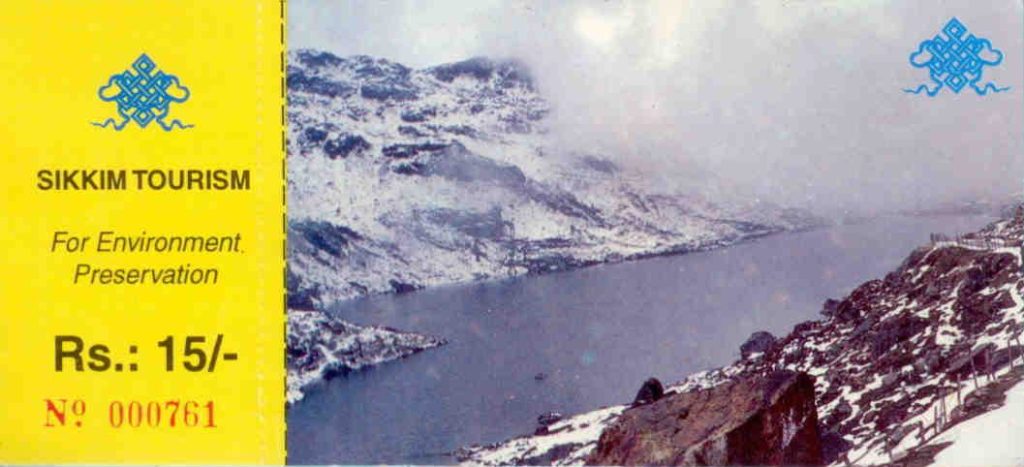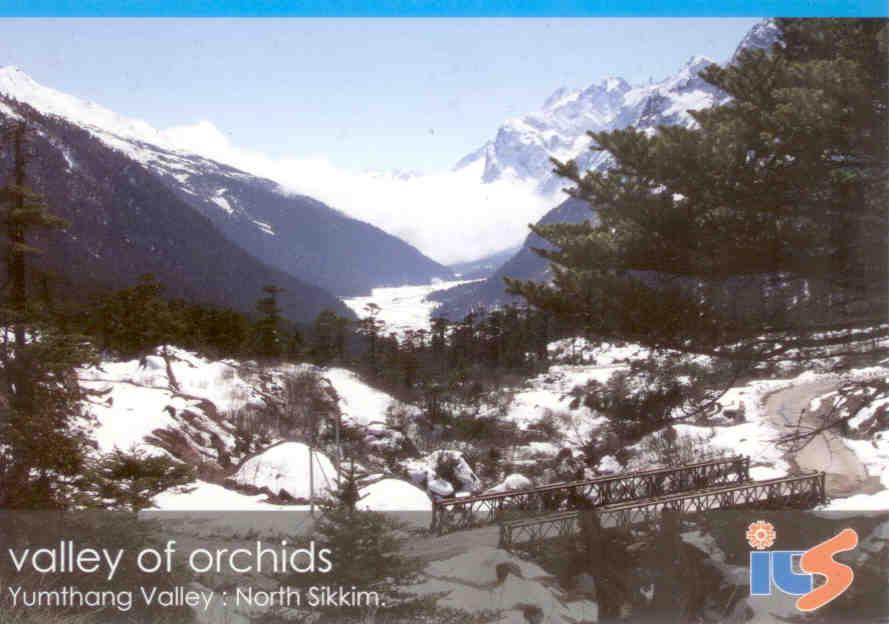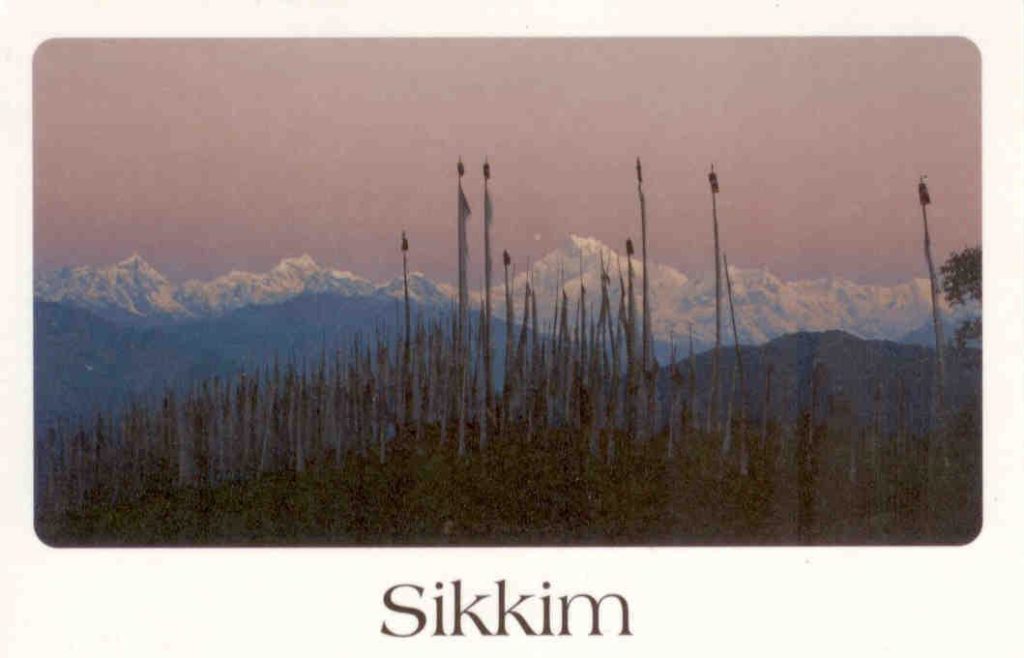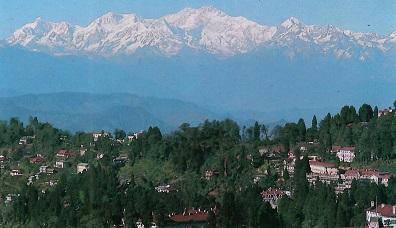-
Tsomgo Lake
Sometimes you buy an entrance ticket, and it comes attached in a series of sub-tickets to a postcard. Every time you see something, they collect one stub. That’s what happened here, and the final ticket is still attached. This item was not mailed, but has an inked number on the reverse of the stub (not the card itself). Despite that writing, we still assign this as Grade: 1
-
Valley of Orchids, Yumthang Valley, North Sikkim
Unused card, just beginning to age on the reverse. Grade: 2
-
Yangsum Farm House
We put this into a search engine to see what we could find. It looks nice, but it’s quite the effort to get there. Unused card. Grade: 1
-
Khangchendzonga Range
Unused 4-3/4″ x 7-1/8″ card. Shows signs of handling. Grade: 2
-
Kangchendzonga (sic) from Darjeeling
We struggled a bit in deciding where to place this card, but were guided by Wikipedia: “Kangchenjunga, also spelled Kanchenjunga, Kanchanjanghā and Khangchendzonga, is the third-highest mountain in the world. Its summit lies at 8,586 m (28,169 ft) in a section of the Himalayas bounded in the west by the Tamur River, in the north by the Lhonak River and Jongsang La, and in the east by the Teesta River. It lies in the border region between Nepal and Sikkim state of India, with three of the five peaks, namely Main, Central and South, directly on the border and the peaks West and Kangbachen in Nepal’s Taplejung District. Until 1852, Kangchenjunga was assumed to be the highest mountain in the world, but calculations and measurements by the Great Trigonometrical Survey of India in 1849 showed that Mt. Everest, known as Peak XV at the time, is higher and it was officially announced in 1856 that Kangchenjunga was third-highest. The Kangchenjunga is a sacred mountain in Sikkim and was first climbed on 25 May 1955.” All that for an unmailed card that has an address written anyway, and while it could look like the bottom edge had been trimmed, we do not think that’s the case. Grade: 3





